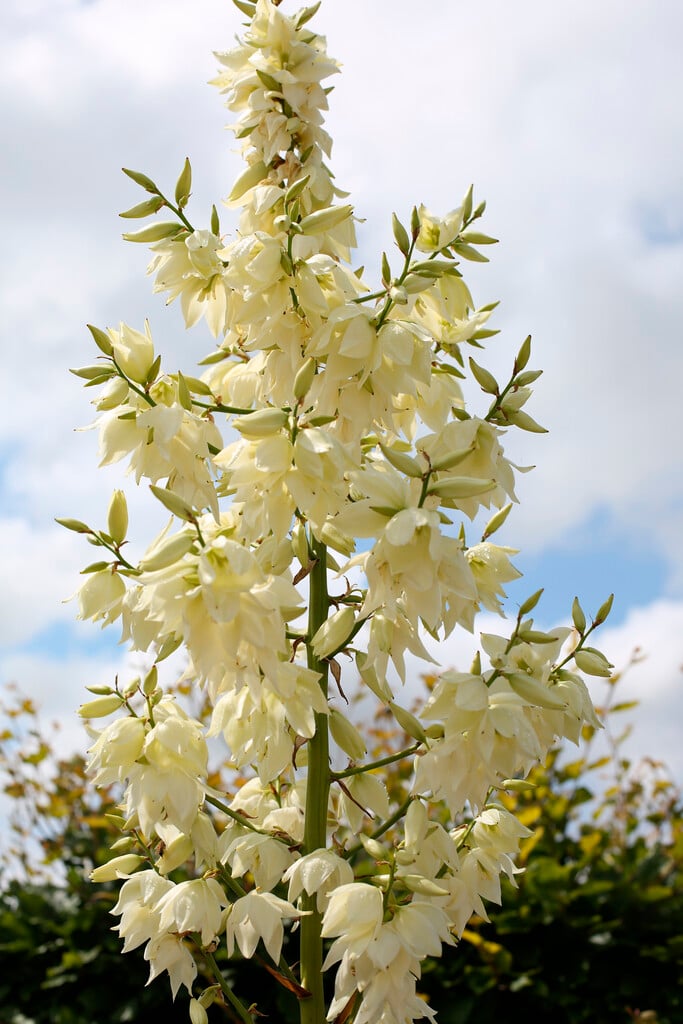Yucca filamentosa
needle palm
A small stemless evergreen shrub forming clumps of sword-shaped, deep green leaves to 75cm in length, edged with curly filaments. Nodding creamy-white flowers 6cm in length are borne in panicles to 2m in height in late summer
Other common names
Adam's needle and threadCarolina silk grass
see moreOur Lord's candle
spoonleaf yucca
thready Adam's needle
Size
Ultimate height
0.5–1 metresTime to ultimate height
10–20 yearsUltimate spread
1–1.5 metresGrowing conditions
Moisture
Well–drainedpH
Acid, Alkaline, NeutralColour & scent
| Stem | Flower | Foliage | Fruit | |
| Spring | Green | |||
|---|---|---|---|---|
| Summer | White | Green | ||
| Autumn | Green | |||
| Winter | Green |
Position
- Full sun
Aspect
South–facing or East–facing
Exposure
Exposed or Sheltered Hardiness
H5Botanical details
- Family
- Asparagaceae
- Native to GB / Ireland
- No
- Foliage
- Evergreen
- Habit
- Clump forming
- Potentially harmful
- Skin allergen. Wear gloves and other protective equipment when handling Pets (dogs, cats): Harmful if eaten - for further information and contact numbers regarding pets, see the HTA guide to potentially harmful plants
- Genus
Yucca can be evergreen perennials, shrubs or trees, with dense or loose rosettes of stiff, sword-shaped leaves and tall panicles of bell-shaped flowers
- Name status
Correct
- Plant range
- USA
How to grow
Cultivation
Grow outdoors in any well-drained soil in full sun. Flowers may require hand-pollination to set seed. Remove spent flowering stems
Propagation
Propagate by seed or remove rooted suckers
Suggested planting locations and garden types
- Mediterranean climate plants
- Architectural
- City and courtyard gardens
- Coastal
- Cottage and informal garden
- Flower borders and beds
Pruning
No pruning required
Pests
Diseases
May be susceptible to leaf spot
Love gardening
Sign up to receive regular gardening tips, inspiration, offers and more
View our Privacy Policy
Get involved
The Royal Horticultural Society is the UK’s leading gardening charity. We aim to enrich everyone’s life through plants, and make the UK a greener and more beautiful place.

